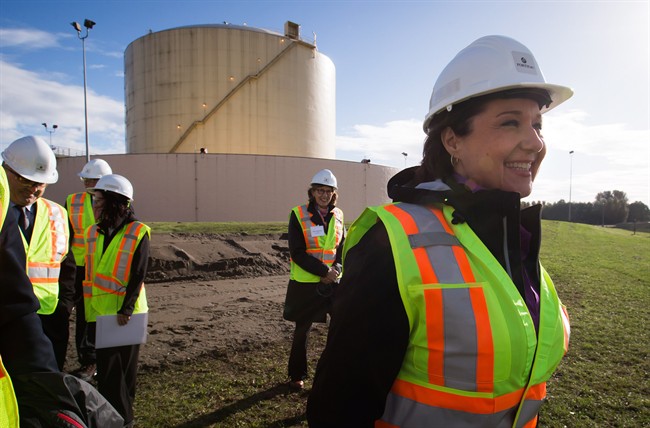VICTORIA – Trying to gauge whether a liquefied natural gas industry is going to finally establish a toe-hold in this province remains a risky endeavor, more so now that oil prices have plummeted to near-record lows.

While LNG is not oil, the price of oil determines so many things that all industries are affected by it. When oil prices deteriorate like they have in recent weeks, they send a ripple effect through the world economy.
One of the impacts is that banks and capital financiers become more conservative in backing short-term capital investments, and some companies begin to nervously watch their cash flow situation and contemplate reduced spending.
Aside from the wild volatility in the energy sector right now, B.C.’s would-be LNG industry is already facing other challenges, not the least of which it is trying to enter an intensely competitive sector, and countries like Australia, Russia, Qatar and the United States have been in the game longer.
Still, B.C.’s cabinet minister responsible for LNG, Rich Coleman, last week reiterated his never-dying optimism that one of the more than dozen companies with LNG terminals on the drawing board for B.C. will make what is called the final investment decision sometime this year.
While it’s easy to dismiss Coleman’s enthusiasm as a case of political delusion, there are some clues out there that, behind the scenes, things are happening that may indeed see at least one of the LNG companies finally make the call to set up shop in this province.
- Some B.C. highways in North Coast reopen after closures due to flooding
- B.C. paramedics union warns of potential job action as bargaining talks break down
- Surrey police say home possibly targeted in 3 separate shootings
- ‘He hunted them’: Family launches petition to keep B.C. mass murderer behind bars
First of all, there has been a sudden and steady increase in the number of key First Nations bands that have inked revenue sharing agreements with LNG companies, to share in any potential windfall from their projects.

Get breaking National news
At least eight northern First Nations have made such deals, and the money involved is substantial. Some bands will be guaranteed a substantial annual revenue stream, which could have an enormous positive impact on the economic health of their members.
Wet’suwet’en First Nations chief Karen Ogen told The Vancouver Sun: “Do we want a better life for our people? Yes, we do. How are we going to get it? Not by sitting here waiting for government handouts.”
According to the Sun, her community will get almost $3 million (if the Shell LNG plant actually goes ahead), to be used to increase education and skills for its 242 members, as well as being invested in housing, health and culture.
While a number of First Nations bands remain firmly opposed to LNG projects and pipelines, this spate of agreements may signal that opposition may be waning in the face of being able to partner in lucrative agreements for First Nations members.
Another important development on the LNG front occurred just before Christmas. Australian LNG giant Woodside Petroleum Ltd. bought out Apache Corp.’s 50 per cent share of the proposed LNG project near Kitimat (Chevron has the other 50 per cent).
A number of analysts have noted a financial transaction of this magnitude (almost $3 billion, which includes Apache’s interest in an Australian LNG terminal) doesn’t occur as a mere whim, and may indicate the Kitimat project is closer to a final investment decision than many may have thought.
Finally, the head of the B.C. LNG Alliance, David Keane, has pointed out a decision to invest in LNG is not going to be based on the price of energy today. He told me these are long-term investment decisions, and that “supply gaps” of energy need to be filled over the next 30 or 40 years.
He says he is very optimistic at least one final investment decision will be made this coming year. The Asian demand for LNG over the next few decades will only grow, no matter what the price may be today, he says.
The proposed LNG projects for B.C. aren’t slated to come on stream for at least several years, so the spot energy market today could be long forgotten by the time any of those terminals are up and running.
Nevertheless, the great guessing game will continue for some months yet. We should know by the end of the year whether the B.C. Liberal government’s all-in strategy for developing LNG in B.C. will begin to pay off, or whether it ends up holding a losing hand.
The way things look right now, I’d be surprised if at least two or three terminals don’t go ahead. That’s nowhere near as many as Premier Christy Clark envisioned in the last provincial election campaign, but even two or three LNG terminals would provide a healthy revenue stream for a provincial government.







Comments